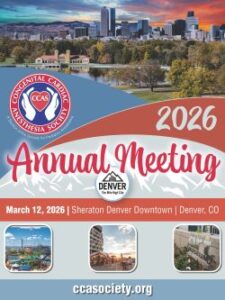Authors: Kaitlin M. Flannery, MD, MPH - Stanford University AND Megan Quinn, MD, MPH - Stanford University
A 10-year-old, 33kg, male with Duchenne Muscular Dystrophy presents for placement of single lead transvenous ICD in the setting of increasing myocardial fibrosis and frequent runs of nonsustained ventricular tachycardia despite treatment with nadolol. His other medications are enalapril and vamorolone. What alteration in management is MOST LIKELY required in patients presenting for anesthesia that are maintained on vamorolone?
EXPLANATION
Duchenne Muscular Dystrophy (DMD) is an X-linked, recessive, neuromuscular disease with an incidence of 1:3000 males. The mutation results in absence of the dystrophin protein, which plays an essential role for muscle cell membrane maintenance and signaling. The disease is typically diagnosed around three years of age when progressive weakness of lower extremity muscles begins. Patients are typically wheelchair bound by 7-13 years. Respiratory failure in the 2nd or 3rd decade is the most common cause of death. Dilated cardiomyopathy is present in 25% of patients by age six. Bradyarrhythmia and tachyarrhythmias are common due to progressive fibrosis of cardiac muscle putting patients at increased risk of sudden cardiac death. Glucocorticoids have been a cornerstone of DMD treatment since the Clinical Investigation of Duchenne Dystrophy (CIDD) group was formed in 1981 and investigated the potential benefit of multiple medications. At the time, prednisone was the only medication with beneficial effect, reducing inflammation in the muscle and slowing loss in ambulation by a few years. Unfortunately, there are significant side effects of chronic glucocorticoids including obesity, osteoporosis, glucose intolerance, hypertension, mood change, immunosuppression, and adrenal insufficiency.1,2
Vamorolone was FDA-approved in 2023 for treatment of patients two years and older with DMD. It is a partial glucocorticoid agonist with anti-mineralocorticoid activity. It is classified as a dissociative glucocorticoid as it possesses anti-inflammatory and immunosuppressive properties but lacks some of the classic adverse side effects. A randomized controlled trial performed from 2018-2021 divided 120 participants into four categories: placebo, prednisone 0.75mg/kg/day, vamorolone 2mg/kg/day, and vamorolone 6mg/kg/day. Over 24 weeks, patients on both doses of vamorolone had improvements in time to stand velocity and distance covered in a 6-minute walk test compared to their baseline, whereas those on placebo demonstrated decline in these parameters over the 24 weeks. Height percentile declined and measures of bone turnover increased in patients on prednisone, but not in patients on vamorolone. Therefore, vamorolone was found to be effective in slowing muscular decline in patients with DMD while decreasing detrimental effects to bone health. Patients on vamorolone had similar increases in BMI as patients on prednisone as well as evidence of adrenal suppression by morning cortisol levels and ACTH stimulation testing.3This seemed to be dose-dependent, as the lower-dose group showed less adrenal suppression than the higher-dose group.
It is important to note that, prior to initiating any treatment in the vamorolone trial, patients with DMD had a high incidence of adrenal insufficiency based on morning cortisol levels and ACTH stimulation testing. This may be explained by the proximity of the DMD and NR0B1 genes on the X-chromosome, as mutations in NR0B1 result in congenital adrenal hypoplasia.3
In patients on vamorolone, administration of stress dose steroids should be considered in the perioperative period due to chronic adrenal suppression by the medication. Continuing nadolol is likely to be beneficial in the context of ventricular ectopy, and enalapril may lead to perioperative hypotension, but those concerns remain unrelated to vamorolone as it will not result in significant changes in blood pressure, heart rate or rhythm.
REFERENCES
1. Ames WA, Hayes JA, Crawford MW. The role of corticosteroids in Duchenne muscular dystrophy: a review for the anesthetist. Paediatr Anaesth. 2005 Jan;15(1):3-8.
2. Parchmont E, Vender S. Anesthetic considerations for patients with Duchenne Muscular Dystrophy and Becker Muscular Dystrophy: management of a 15-year-old male with muscular dystrophy for a cystourethroscopy, laser lithotripsy and stent placement – a case study. CCAS E-News. 2021; https://www2.ccasociety.org/newsletters/2021summer/interesting%20case.html.
3. Guglieri M, Clemens PR, Perlman SJ, et al. Efficacy and safety of vamorolone vs placebo and prednisone among boys with Duchenne Muscular Dystrophy. A randomized control trial. JAMA Neurol. 2022 Oct 1;79(10):1005-14.
